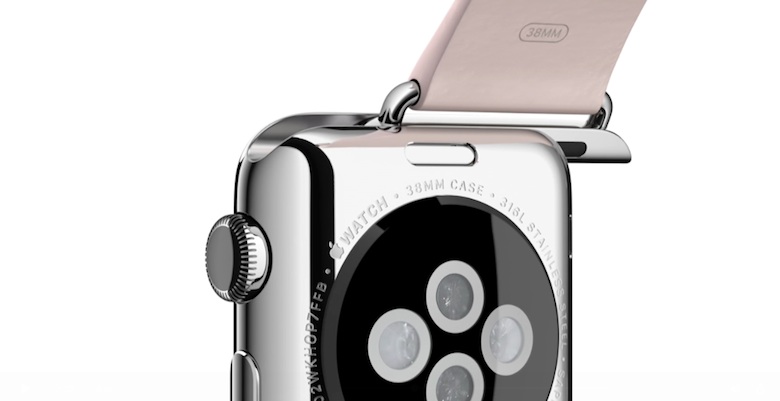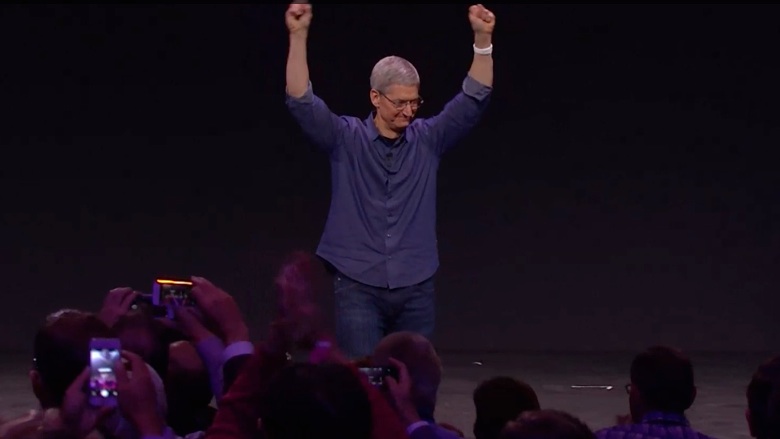The Apple Watch is more than four months from release (at the very soonest) and any hard information we have at the moment comes directly from the company itself. Crucial details, like battery life and the technology the watch uses to connect with your iPhone, remain hidden for the moment. We don’t know how vast swaths of the interface work, and we honestly have no idea what to expect from this device the first time we strap one onto our wrist.
But Apple spent over an hour talking about its newest product category at yesterday’s iPhone 6 launch event, and we got a pretty good look at what the company’s planning for its first-ever wearable. If executed properly, some of Apple’s achievements here could easily eclipse every other smart watch on the market today. Here’s the five areas I think the Apple Watch really shines relative to the competition.
Customizability

Current smartwatches are actually pretty good about this. You can get watch bands in a variety of colors for all the devices in Samsung’s Gear lineup, and you can change the type of band with watches like Pebble Steel. The Martian family of watches comes in several shapes and sizes, and the new Android Wearofferings can be tailored to a limited extent.
The Apple Watch eclipses all this with a portfolio of builds and bands that’s staggering in its attention to personalization. The watch comes in two sizes, with any of three finishes (stainless steel alloy, aluminum alloy or 18K gold), and a choice of six different straps (sport band, leather loop, leather modern buckle, simple leather classic buckle, stainless steel link bracelet and Milanese loop). All of those bands fasten using different methods, and some are available in more than one color. Each one is built for a specific use case, as well: the sport band uses a sweat-resistant synthetic rubber, for example, whereas the Milanese loop is an infinitely-adjustable metallic weave better suited to fancy occasions.
Strap swapping

Switching out one strap for another is accomplished via a new attachment method that’s typical of Apple in its simplicity. The straps are fitted with protruding end caps which slide into recessed slots in the Apple Watch, locking into place with what look to be spring-loaded grab plates on their inner faces.
Wristwatch aficionados may take exception to my listing this point as an advantage: after all, we praised manufacturers like Pebble for incorporating 22mm standard fittings into their watches, and we continue to prefer industry standards to proprietary solutions. But the Apple Watch’s system as pictured in the demonstration requires no pins, no tools, no long fingernails to activate a nestled springbar: it just slides and locks into place. When you want to release it, press a button and it slides out. I’m not always a do-it-yourselfer, so anything that can help me avoid spending $7-$10 at my local watch shop every time I want to swap my watch band, I count as a success.
Sizing options

I touched on this in the customizability section, but it’s so important it deserves its own subhead. Ever since smartwatches hit the mainstream, a bunch of us have wondered exactly when manufacturers would start paying attention to the smaller average wrist size of half the population of the planet: women.
While some firms have brought us more petite watches already –Mykronoz has a really wide selection of form factors– and devices like Pebble Steel are small enough for some, there hasn’t been a device like the 1.5-inch Apple Watch. This is a wearable that combines a proportionately large screen with a small casing and a potentially huge ecosystem, something which hasn’t been done before. The smaller size might finally get people like Mobile Geeks’s Nicole Scott to stop asking OEMs where all the women-sized smartwatches are (listen to the latest Pocketnow Weekly for the full story on that).
Useful gimmicks

We periodically slam outfits like Samsung for bundling superfluous features into its smartphones and wearables. Apple hasn’t entirely resisted the urge to do the same in the Apple Watch –sending people your current heartbeat lands somewhere between creepy and revolting on the WTF scale– but the watch’s other “gimmicks” are really compelling.
It’s really cool, for example, that hitting a button on the side of the watch brings up a list of your Apple Watch-toting friends, any of whom can be contacted with a subtle vibration via a quick double-tap on the display. You can establish a direct connection with them using the watch’s walkie-talkie feature, call them, or dictate a text message using Siri (a more accurate solution than some others on the market). You can also pay for purchases with the watch’s NFC chip if you’re enrolled in the new Apple Pay service.
The interface

 The foundation of what Apple’s done with its new wearable interface is predictable: the sapphire-fronted face of the watch is dominated by a touch screen that responds to taps and swipes, just like most other smartwatches on the market. But there the similarity ends. Apple’s new display also reacts to force, recognizing a harder press as a kind of substitute for the long-press currently in vogue.
The foundation of what Apple’s done with its new wearable interface is predictable: the sapphire-fronted face of the watch is dominated by a touch screen that responds to taps and swipes, just like most other smartwatches on the market. But there the similarity ends. Apple’s new display also reacts to force, recognizing a harder press as a kind of substitute for the long-press currently in vogue.
More impressive is the new watch’s “digital crown,” a stroke of genius-level simplicity. Rather than a simple side-mounted button, the Apple Watch’s crown rotates just like that of an old analog timepiece. It scrolls or zooms depending on context, keeping your hand off to the side so your fingers don’t cover up the small display. And it’s still pressable: a single push returns you to the watch’s homescreen, and a long-press summons Siri.
On top of all that, the watch’s sound effects and so-called “taptic engine” work together to provide instant feedback to inputs. Vibrations are subtle and highly localized, minimizing the heavy buzz common to some other watches, and they’re not confined to notifications: as Yahoo’s David Pogue reports, apps can use the taptic engine to provide GPS directions by feel. In the same article, Pogue calls the sounds the watch produces “clear and full of personality,” something which can’t be said for almost any other current smartwatch.

No first-generation product is perfect, as the underpowered and overheated 2008-era MacBook Air can attest. When the Apple Watch finally drops in early 2015, you can be sure it’ll come with a boatload of deficiencies: the company’s ominous omission of battery life information and its reluctance to demonstrate the awkward on-wrist calling mode provide some early insights here. We fully expect to have a significant list of complaints when Apple’s first wearable platform debuts, as we did when we reviewed Google’s Android Wear.
But Tim Cook didn’t say his company had built a perfect product. He said that Apple believed its watch would “redefine what people expect from its category.” Given the public’s low expectations of wearables to date, that may not be a terribly high bar to set, but if even half of the above standouts deliver on their promises, he’ll have been right.

No comments:
Post a Comment